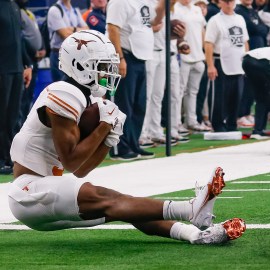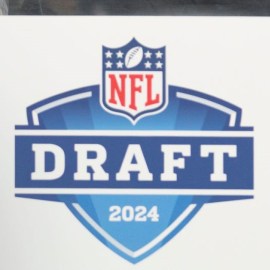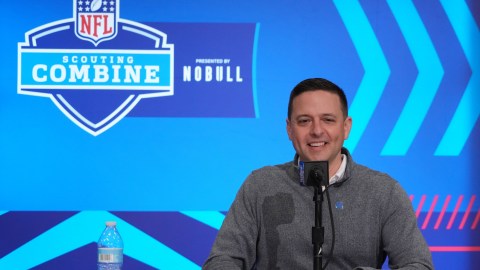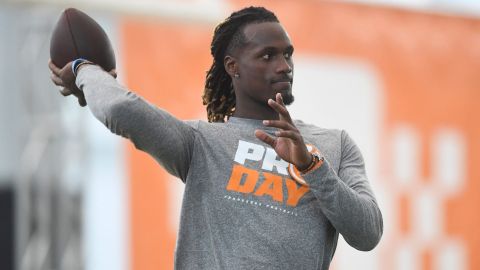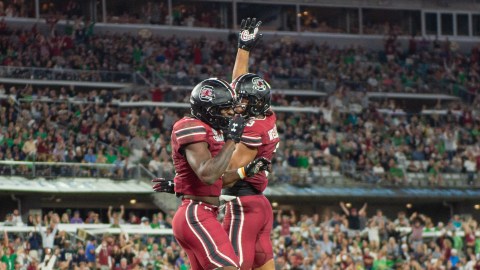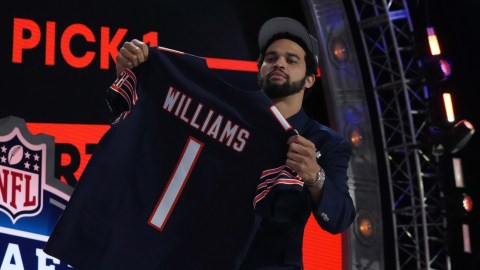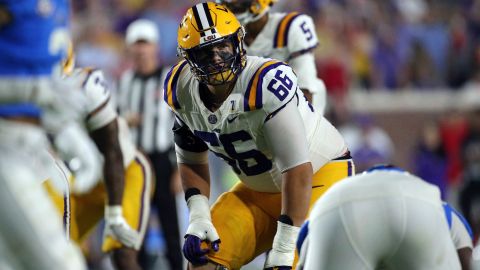The New England Patriots' situation in the 2024 NFL Draft is complicated.
It's enviable in that they own the No. 3 overall pick, a selection that presents an opportunity to choose one of the top quarterbacks available. It's unenviable in that New England is coming off a disastrous 2023 season (hence the high pick) and must sift through an abundance of uncertainty while making a franchise-altering decision.
There's risk involved with every draft pick. There are no guarantees. But the Patriots, fresh off a 4-13 record with multiple holes on their roster, can't afford to drop the ball this April, especially if they use their first-round selection on a signal-caller. It would set them back for years.
Drafting a QB at No. 3 feels like the most likely scenario for New England, even though head coach Jerod Mayo and owner Robert Kraft both insisted the Patriots are open to trading the pick. And again, the Pats are well positioned in that regard, with Drake Maye, Jayden Daniels and J.J. McCarthy among the quarterbacks potentially available to New England, assuming Caleb Williams goes No. 1 overall to the Chicago Bears.
Story continues below advertisement
But if two of those three are available, who do the Patriots choose? Therein lies the dilemma, because the chances of a quarterback drafted up high succeeding are lower than most probably realize.
More Patriots
The Athletic's Jacob Robinson explored this topic in a newsletter published Friday. He looked at every quarterback drafted in the top 10 since 2011 and grouped them into four categories: Stars, starters, a major reach and a major bust.
Upon review, 26% of the quarterbacks qualified as a "star," according to Robinson's formula. That number is only slightly higher than the 22% who qualified as a "major bust."
Most of the QBs landed in the "starter" range, at 33%, whereas 19% of the quarterbacks fell into the "major reach" bucket.
Story continues below advertisement
So, how did Robinson arrive at these conclusions for each individual quarterback? Well, he took into account the following five criteria:
Starts -- Were they good enough to start at least 50 games in their career?
Wins -- Did they have a winning record with the team that drafted them?
Valuable -- Did they sign a second contract with the team that drafted them?
Longevity -- Were they still starting after turning 29?
Playoffs -- Did they win a playoff game?
(The whole breakdown right here is worth a read.)
Robinson then applied the answers to those questions to a rating scale, with a "star" matching all five criteria, for instance.
Story continues below advertisement
Is this a perfect science? Of course not. But it nevertheless offers context and, frankly, paints an unsettling picture for those eyeing a quarterback near the top of the draft.
Sure, there's a good chance the Patriots land a viable quarterback at No. 3. After all, 59% of the QBs reviewed by Robinson became a "star" or a "starter" in the NFL.
But there's also a decent chance -- 41%, according to this exercise -- New England botches the opportunity, a misstep that, again, could set the organization back for several years.
Story continues below advertisement
This isn't necessarily to scare Patriots fans. Each draft is different. And there's a clear top tier of quarterbacks this year that New England can pluck from. That's not always the case, sometimes forcing teams to reach in Round 1.
Just understand, however, that this is the Patriots' current lot in life. It's an unnerving existence long reserved for other franchises; not those with the luxury of employing Tom Brady for two decades.
The mighty have fallen. To rise again, New England can't screw this up.
Featured image via Eric Canha/USA TODAY Sports Images
